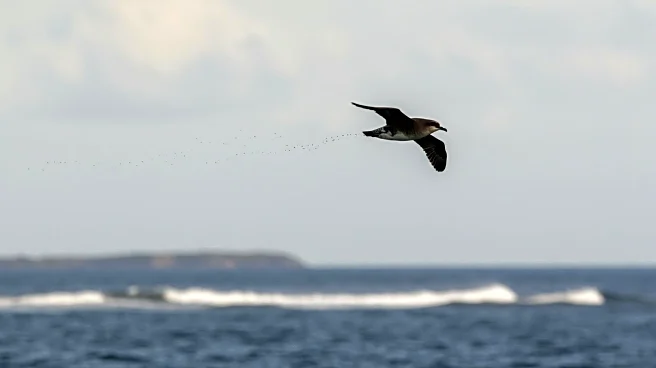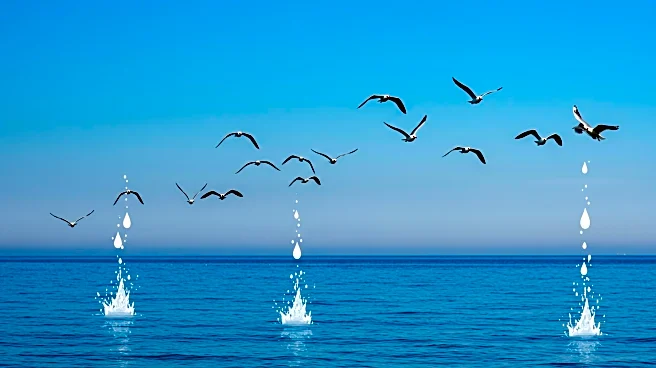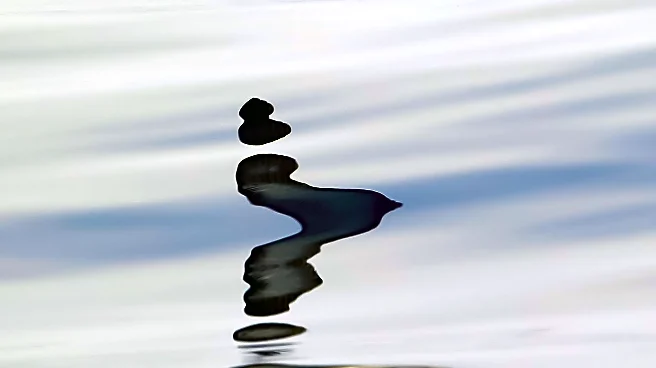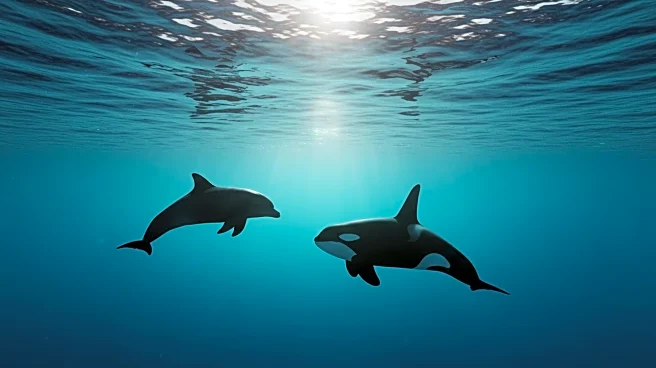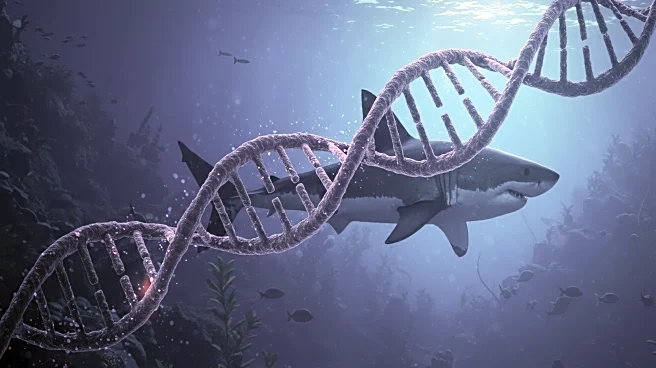What's Happening?
Seabird researcher Leo Uesaka has uncovered a unique behavior among streaked shearwaters, a large seabird species, which involves defecating exclusively while flying. This behavior occurs at regular intervals of 4 to 10 minutes, as detailed in a study published in Current Biology. The research initially aimed to study the birds' leg movements during takeoff, but the frequent droppings captured on video provided unexpected insights into their excretion habits. This marks the first time scientists have observed seabird bathroom habits in their natural marine environment, offering new perspectives on their behavior and ecological roles.
Why It's Important?
The discovery of streaked shearwaters' midair defecation habits has significant ecological implications. Seabird droppings are rich in nitrogen and phosphorus, which can inadvertently fertilize coastal waters, enhancing marine ecosystems. However, these droppings can also serve as vectors for avian influenza, posing potential health risks. Understanding these behaviors can lead to better insights into seabird ecology and their environmental impact, highlighting the importance of animal excretion in nutrient cycling and disease transmission within marine ecosystems.
What's Next?
Further studies are anticipated to delve deeper into the ecological roles of seabird excretion. Researchers may explore the health implications of these droppings on marine life and coastal environments, as well as their potential role in spreading avian diseases. This research could lead to broader investigations into the behaviors of other seabird species and their contributions to marine ecosystems, potentially influencing conservation strategies and environmental policies.
Beyond the Headlines
The study of streaked shearwaters' bathroom habits opens up discussions on the ethical considerations of wildlife research and the importance of understanding animal behaviors in their natural habitats. It also raises questions about the long-term impacts of seabird excretion on marine biodiversity and the balance of coastal ecosystems, emphasizing the need for comprehensive ecological studies.
